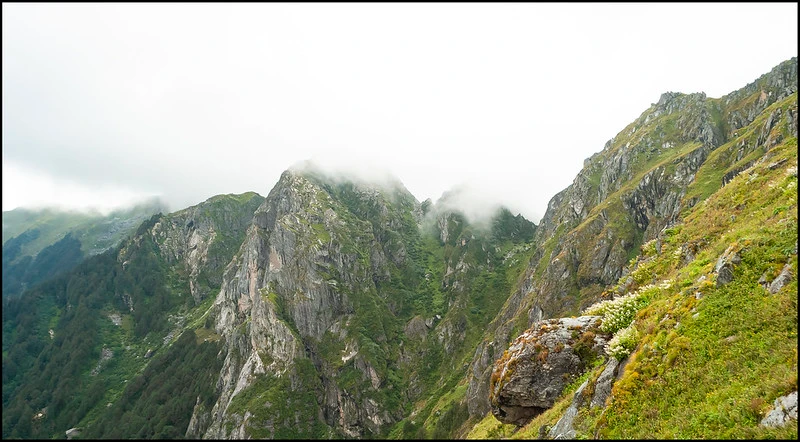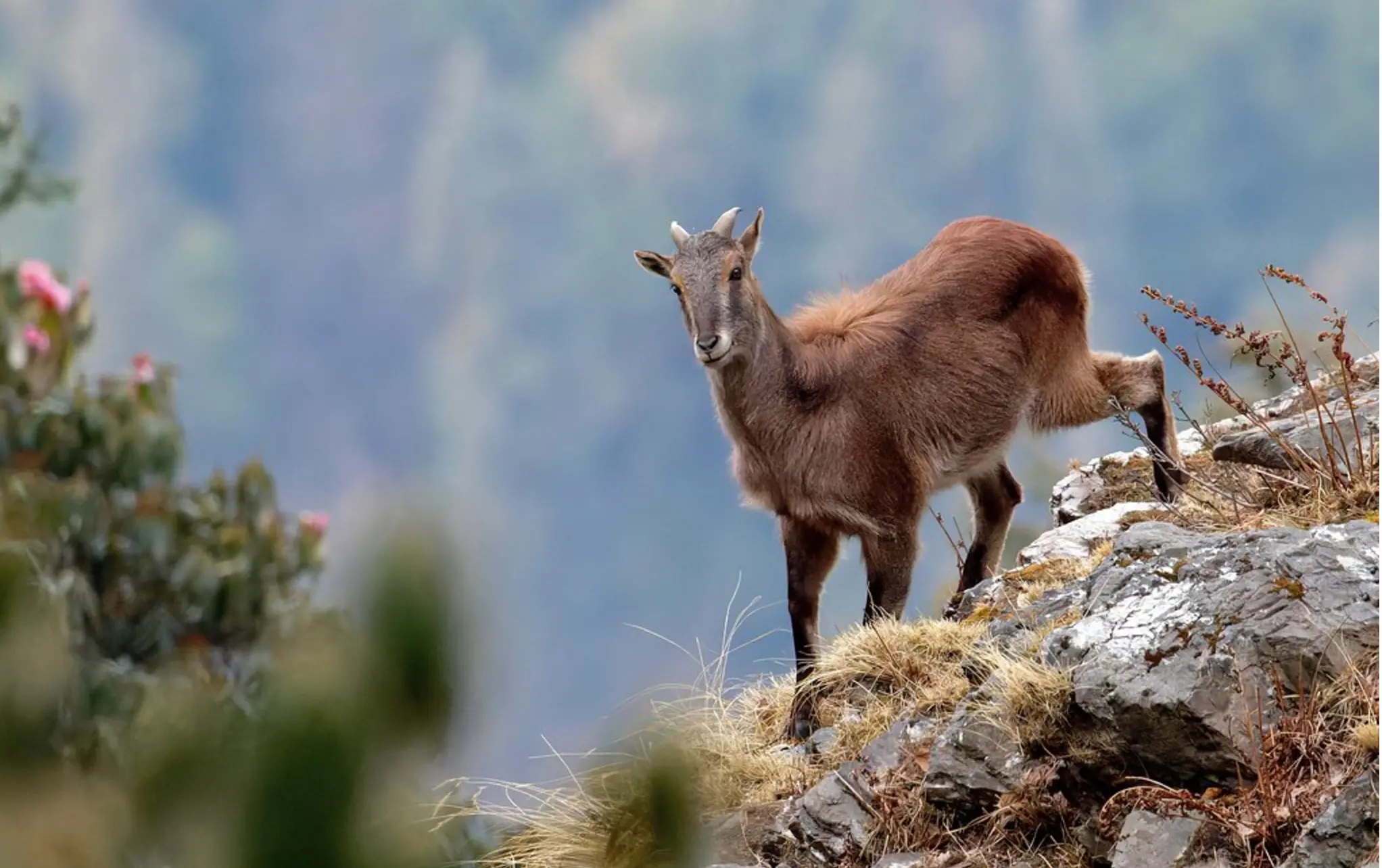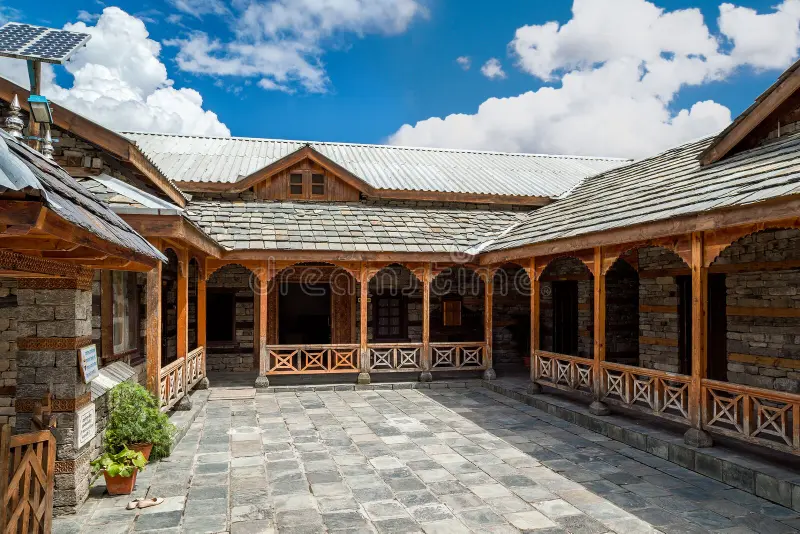Nestled amidst the breathtaking landscapes of Himachal Pradesh, the Great Himalayan National Park is a haven for nature lovers and adventure seekers. Recognized as a UNESCO World Heritage site, this stunning park spans over 1171 sq. kilometers and is known for its rich biodiversity, from dense forests and alpine meadows to snow-capped peaks. It is a paradise for those looking to experience the untouched beauty of the Himalayas. Whether you are eager to trek through a serene valley, spot rare wildlife like the elusive snow leopard, or simply want to immerse yourself in the peaceful ambiance of nature, there are plenty of things to do in Great Himalayan National Park waiting for you.
Planning your adventure here? Book a hassle-free ride with Savaari’s cab service in Delhi and explore the park’s wonders at your own pace.
Table of Contents
- About Great Himalayan National Park
- Things To Do in Great Himalayan National Park
- How to Plan a Trip to Great Himalayan National Park?
- Hotels and Resorts in Great Himalayan National Park
- Best Road Trips from Great Himalayan National Park
- Useful Links
About Great Himalayan National Park

Great Himalayan National Park is nestled in the Kullu region of Himachal Pradesh and is renowned for its lush green valley, diverse wildlife, and stunning scenery. The park is a UNESCO World Heritage site that is home to various flora and fauna, including rare and endangered species like the elusive snow leopard, Himalayan Tahr, and blue sheep.
The park’s commitment to preserving pristine wilderness and offering an immersive experience in nature sets it apart. This national park is also known for its scenic trekking routes, which wind through ancient forests and lead to remote mountain landscapes.
History of Great Himalayan National Park
The Great Himalayan National Park was used as the ancient trading route between India and Tibet. However, it was established as a national park in 1984 as a protected area. The area is known for its rich biodiversity and the spiritual significance of local deities, with local communities holding many of its forests and sacred groves. In 1987, the park’s first working plan was completed, and in 1992 & 1994, Tirthan Wildlife Sanctuary and Sainj Wildlife Sanctuary were created.
Finally, in 1999, it was officially designated a national park to preserve its natural heritage. Later, in 2014, this park was recognized as a UNESCO World Heritage Site, which acknowledges its historical importance and role in conserving high-altitude ecosystems.
Great Himalayan National Park: Forests and Wildlife

The Great Himalayan National Park is renowned for its rich wildlife and diverse forest ecosystem, which varies across different altitudes. Spanning from 1500 to over 6000 meters above sea level, the park is home to dense forests, alpine meadows, and glacial zones. Lower altitudes feature lush temperate forests filled with deodar oak and pine trees, while higher regions are covered with subalpine forests and alpine forests.
The park’s wildlife is equally impressive, offering a sanctuary to numerous species, including elusive creatures like the snow leopard, Himalayan tahr, and endangered musk deer. Birds such as the Western Tragopan and Himalayan Monal add vibrant colors to the landscape, making it a paradise for birdwatchers.
Flora in Great Himalayan National Park
- Deodar
- Oak
- Pine
- Himalayan Fir
- Rhododendron
- Birch
- Juniper
- Maple
Fauna in Great Himalayan National Park

- Snow Leopard
- Himalayan Tahr
- Musk Deer
- Western tragopan
- Himalayan Monal
- Blue sheep
- Red Fox
Lesser-Known Facts about Great Himalayan National Park
- The Great Himalayan National Park is home to over 375 species of fauna, making it a biodiversity hotspot in the Himalayan region.
- The park includes four major valleys: Tirthan, Sainj, Jiwa Nal, and Parvati, each offering unique landscape and trekking experiences.
- It took almost two decades from its establishment in 1984 for the park to be officially designated as a UNESCO World Heritage site in 2014.
- Unlike many other parks in India, it does not allow motor vehicles inside, making it one of the most pristine areas to explore on foot.
- The park protects sacred groves known locally as “Dev Vans,” where locals believe deities reside, reflecting a deep cultural connection with nature.
- It has many remote areas that remain largely unexplored, offering opportunities for rare wildlife sightings, including the snow leopard.
- The park is a crucial source of freshwater as several important rivers, like the Tirthan and Sainj, originate within its boundaries.
Reasons to Visit Great Himalayan National Park
- The park is home to rare wildlife like snow leopards, Himalayan Tahr, and over 180 bird species.
- Untouched landscapes, including dense forests, alpine meadows, and glacial valleys, offer breathtaking views.
- With several trekking routes through valleys and forests, the park provides unforgettable adventure opportunities.
- Tourists and adventure lovers can experience the local Himachali culture and visit sacred groves revered by the communities living near the park.
- With no motor vehicles allowed, the park provides a serene environment perfect for reconnecting with nature.
Things to do in Great Himalayan National Park
There are numerous things to do in Great Himalayan National Park for nature lovers, adventure enthusiasts, and cultural explorers:
Trekking Adventures

Trekking is undoubtedly one of the highlights of the Great Himalayan National Park, offering an unmatched way to experience the stunning landscapes, diverse ecosystems, and serene atmosphere of this Himalayan paradise. Here are the popular trekking routes:
- Tirthan Valley Trek: Tirthan Valley is known for its stunning landscapes, pristine rivers, and dense forests of oak pine and deodar. Starting from the village of Gushaini, the trek offers breathtaking views of snow-clad peaks. Along the way, trekkers can explore the picturesque Ropa, Shilt Hut, and Rolla, each offering panoramic vistas.
- Sainj Valley Trek: The route is less frequented compared to Tirthan Valley, allowing trekkers to enjoy solitude and pristine nature. Starting from the quaint village of Sainj, the trek leads through thick forests and traditional Himachali villages like Shangarh. It is a perfect place to camp overnight and enjoy the serene beauty of the Himalayas.
- Raktisar Trek: This trek is more challenging than others. Raktisar is located at an altitude of about 4200 meters and is the source of the Tirthan River. The journey to Raktisar involves steep ascents, rocky paths, and river crossings, along with glacial valleys and snow-covered peaks. You can also spot the snow leopard or the Himalayan blue sheep.
- Pin Parvati Pass Trek: This is one of the region’s iconic treks. It is extremely challenging and recommended only for seasonal trekkers. The journey spans over 100 kilometers, and the highlight is reaching the Pin Parvati Pass at an altitude of 5319 meters, where you can witness 360-degree views of the Himalayan ranges.
Best Time for Trekking: The ideal time for trekking is from April to June and September to November. During this time, the trails are accessible, offering the best conditions for exploring the trek.
Camping Under the Stars
Camping is another popular activity in the park, providing a chance to immerse yourself in nature. Setting up a camp along the Tirthan or Sainj rivers and sleeping under a canopy of stars is an experience unlike any other. You can enjoy campfires, cook meals in the open, and listen to the sounds of nature, creating memories that last a lifetime. Remember to follow the park’s guidelines and leave no trace.
- Cost of tents: INR 200 – INR 700, depending on their capacity
Wildlife Spotting
If you are fascinated by the diversity of wildlife, then wildlife spotting is a must among the things to do in Great Himalayan National Park. The park is home to various mammals like the elusive snow leopard, Himalayan Tahr, blue sheep, and Asiatic black bear. You can take guided tours to explore the deeper regions of the park, increasing your chances of spotting these creatures.
[Read More: Things to do in Kaziranga National Park]
Things to Do Around Great Himalayan National Park
The Great Himalayan National Park (GHNP) in Himachal Pradesh is a paradise for nature lovers and adventure seekers. Beyond the park’s breathtaking landscapes, there are several exciting activities and attractions nearby that offer a deeper connection with the region’s natural beauty. Here are some of the best things to do around GHNP:
Visit Tirthan Valley
Just a short drive from the park, Tirthan Valley is an idyllic spot known for its tranquil rivers, quaint villages, and lush greenery. It’s perfect for activities like trout fishing, riverside camping, and exploring village life. One of the highlights is visiting the charming village of Gushaini for a peaceful retreat.
- Timings: Open all day
- Entry Fees: Nil
- Best Time To Visit: March–June and September–November for pleasant weather.
Explore the Serolsar Lake Trek

A moderately easy trek near the GHNP, the Serolsar Lake Trek offers stunning views of the surrounding mountains and dense forests. The serene lake is believed to have healing properties, making it a sacred spot for locals. The highlights include visiting the nearby Budhi Nagin temples dedicated to a local deity and witnessing the breathtaking beauty of Serolsar Lake.
- Timings: Best during daylight hours; start early in the morning
- Entry Fees: Nil
- Best time to visit: Accessible year-round but best from March to November.
Explore Shoja
Shoja is a quaint village about 5km from the Jalori Pass and around 30 km from the park. It offers a serene escape with stunning views of the snow-capped Dhauladhar ranges and lush forests. The major highlights of Shoja are strolling through the village to experience traditional Himachali architecture and visiting Raghupur Fort.
Jalori Pass

The Jalori Pass is located about 30 km from GHNP and is a high-altitude mountain pass offering stunning views of the surrounding peaks. It’s an excellent base for short treks and adventure activities like rock climbing and camping. Enjoy panoramic views of the Himalayan from the past and camp under the stars amidst alpine meadows.
Explore The Great Himalayan National Park Museum
Located in Sai Ropa, the Great Himalayan National Park Museum offers a glimpse into the park’s rich biodiversity and the traditional lifestyle of the local communities. It’s a great place to learn about the region’s flora, fauna, and cultural heritage. You can view exhibits on the park’s diverse wildlife, including rare species of birds and mammals. It’s a great place for families and children to understand the ecological importance of the park.
- Timings: 10:00 AM–5:00 PM
- Entry Fees: INR 30 per person
- Open Days: Open all days except Mondays and national holidays.
How to Plan a Trip to Great Himalayan National Park?
A trip to Great Himalayan National Park is an adventure filled with breathtaking views, diverse wildlife, and peaceful nature trails. Planning this trip can be both exciting and a little daunting if you don’t know where to start. But don’t worry; it’s all about timing, preparation, and knowing what to pack.
Start by choosing the correct season – March to June and September to November are ideal for exploring the park’s beauty. Next, decide your entry point – Tirthan Valley and Sainj Valley are popular getaways. Pack warm clothing and sturdy hiking shoes, and carry essentials like permits, a map, and some snacks for the trails.
How to Reach the Great Himalayan National Park?
There are several modes of transportation you can choose to reach the Great Himalayan National Park:
By Train
Many travelers find reaching the Great Himalayan National Park by train convenient. The nearest major railway station is in Joginder Nagar, approximately 50 kilometers away from the park. Several trains connect major cities like Delhi, Chandigarh, and Pathankot to Joginder Nagar. From the station, you can hire a taxi from Joginder Nagar to the park through the Savaari car rental app, traveling comfortably in their chauffeur-driven cabs.
By Road
Traveling to the Great Himalayan National Park by car offers flexibility and adventure. The park is well-connected by roads, with the nearest towns being Tirthan and Sainj, around 10-20 kilometers away. You can drive from major cities like Delhi, Chandigarh, or Manali, enjoying the breathtaking mountain views along the way. For a hassle-free journey, consider booking a taxi service in Chandigarh with Savaari, which will ensure a smooth ride through the stunning hills.
By Flight
If you are flying, the nearest airport to the Great Himalayan National Park is Kullu Manali Airport (Bhuntar), located about 50 kilometers from the park. Regular flights operate from Delhi and Chandigarh to this airport. Alternatively, you can easily book an airport taxi in Chandigarh Airport to the park through the Savaari cab booking app for a comfortable transfer amidst the beautiful landscapes of Himachal Pradesh.
Things To Do Near Bhuntar Airport

Source: Dreamstime
If you are flying into Bhuntar Airport, you are in for a treat, as this area is bursting with natural beauty and exciting activities, perfect for a quick visit before heading to the park. Here are the amazing things you can do near Bhuntar Airport:
- Explore Kullu: Visit this charming town known for its beautiful temples and vibrant markets just a short drive from the airport.
- Enjoy adventure activities in Manali: About 50 kilometers away, Manali offers thrilling activities like paragliding and river rafting for adrenaline seekers.
- Visit Naggar: Discover the quaint village of Naggar, home to Naggar Castle and various art galleries, perfect for a peaceful experience.
- Breathtaking Views: Soak in the serene landscape of Kullu Valley, where stunning views await to enhance your travel experience before heading to the Great Himalayan National Park.
Best Time to Visit Great Himalayan National Park
The best time to visit Great Himalayan National Park is during the spring and autumn months, specifically from March to June and September to November. During these periods, the weather is pleasantly mild, with daytime temperatures ranging from 15°C to 25°C, making it ideal for trekking and wildlife spotting.
Spring brings vibrant wildflowers and lush greenery, while autumn showcases stunning fall colors. The monsoon season from July to August can lead to heavy rainfall, making trails slippery and less accessible. Therefore visiting during the recommended months allows you to fully enjoy the park’s breathtaking beauty and diverse ecosystems.
Travel Tips for Visiting Great Himalayan National Park
Keep in mind the following travel tips for visiting Great Himalayan National Park:
- Obtain necessary permits: Make sure to acquire the required permits before entering the park, which can be obtained at the park entrance.
- Dress in layers: Wear warm layered clothing to adapt to fluctuating temperatures, especially if hiking at higher altitudes.
- Sturdy Footwear: Bring comfortable waterproof hiking boots for rugged terrain and uneven trails.
- Pack Handy Items: Carry essentials like a first-aid kit, reusable water bottle, flashlight, and snacks to stay prepared.
- Respect wildlife: Keep a safe distance from animals and follow park guidelines to ensure their safety and yours.
Great Himalayan National Park Entry Fee
Before visiting the park, make sure you’re aware of the entry fees and required permits to avoid any hassle. Here’s a breakdown of entry fees at the park:
- The entry fee for Indian nationals is INR 200 per person, and the entry fee for foreign visitors is INR 800 per person/day.
- The entry fee for Indian students is INR 100 per person, whereas the entry fee for international students is INR 500 per student.
- Entrance to the park is by permit, with additional charges for still and video cameras. Permits for the core zone can be obtained at the head office in Shamshi and the range offices in Shairopa (Tirthan Valley) and Ropa (Sainj Valley).
Hotels and Resorts in Great Himalayan National Park
Consider the following list of hotels and resorts in Great Himalayan National Park and surrounding areas to plan your trip:
| Accommodations | Address |
| Great Himalayan Nature View Cottage and Resort | Village and Post Office Dehuri, Tirthan Valley, Banjar, Himachal Pradesh–175123 |
| The Bright Side Resort | Badiropa, Tehsil Banjar, Kullu, Himachal Pradesh–175123 |
| Tethys Ski Resort | Nagrot Village, Narkanda, Himachal Pradesh–171213 |
| The Himalayan Village | Parvati Valley, Kailash Nagar, Doonkhara, P.O. Jari, Kasol, Kullu, Himachal Pradesh–175105 |
| The Forest Edge | Tirthan Valley, Village Sairopa, Himachal Pradesh–175123 |
Nearby Best Road Trips From Kullu
If you are looking to explore beyond the park, you are in luck! Here are some of the highest-rated road trips you can go on from Great Himalayan National Park, Kullu:
| Destination | Distance by Road (Approx) |
| Kullu to Kasol | 40 km |
| Kullu to Manali | 40 km |
| Kullu to Solang Valley | 51 km |
| Kullu to Jibhi | 63.8 km |
| Kullu To McleodGanj | 184.3 km |
The Great Himalayan National Park is a treasure trove of adventure and tranquility, offering activities like trekking, wildlife spotting, and cultural immersion. From navigating scenic trails to experiencing the rich biodiversity, there is something for everyone. Download the Savaari cab booking app today, book hassle-free car rentals from major transportation points, and embark on an unforgettable journey through this majestic park.
Useful Links
Last Updated on December 11, 2024 by V Subhadra





